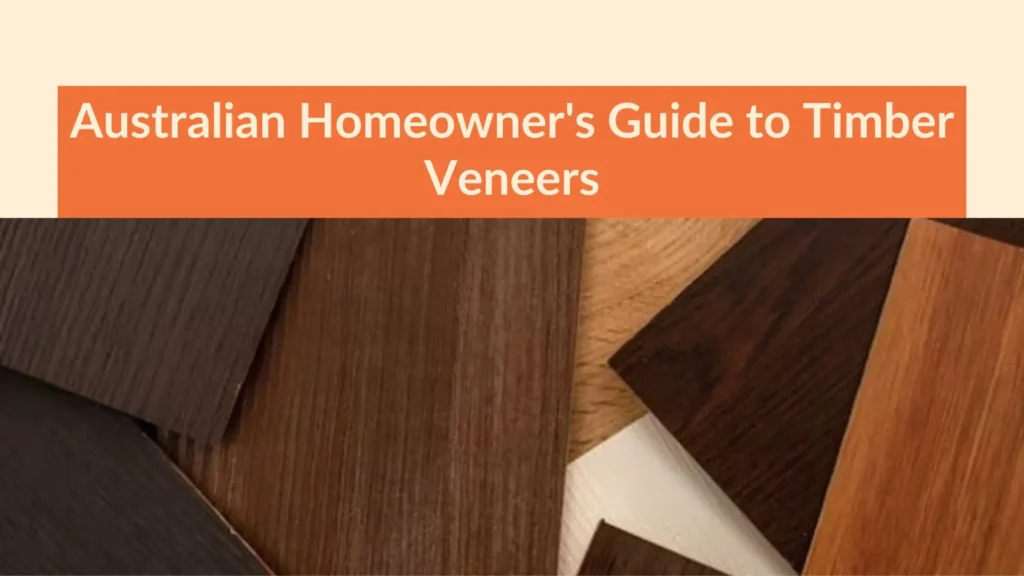Guide to Timber Veneers in Australian Kitchens
Table of Contents
Introduction
One of the most considerations in kitchen design is the finishing material. This has both a functional and aesthetic effect, as the veneer both provides a stunning look and gives protection.
Whether you’re renovating your kitchen or building a new one, the choice of veneer is of particular importance. It is one of the questions most commonly asked to our experts in redesign projects.
In this article, we’ll dive into wood veneers, combining our team’s experience with the latest market trends, to help you in making this crucial decision.
What is Timber Veneer?
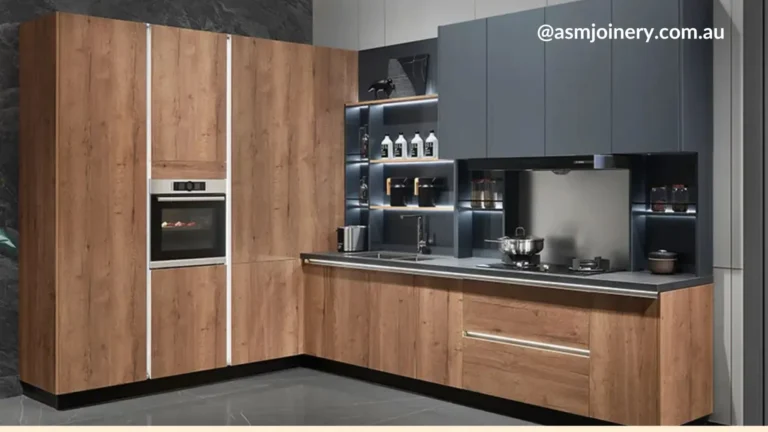
Timber Veneer is a thin layer of wood, sliced from different types of timber, each with its own unique grain, color, and texture. No two veneers are the same, making them truly special.
Timber veneer is quite thin, usually between 0.8mm to 3mm thick.
It’s attached to a core substrate material like MDF or particle wood. This core material stabilizes the surface and seals the inner body, while the veneer provides the beautiful finish and protection.
Once installed, timber veneers are coated with polyurethane to give them a shiny finish. The thickness of this coating depends on how shiny you want your veneer to be.
Nowadays, there are also non-timber veneer options like laminates and melamine, which are made to look and feel like real timber veneer.
Types of Wood Veneer Used in Kitchens
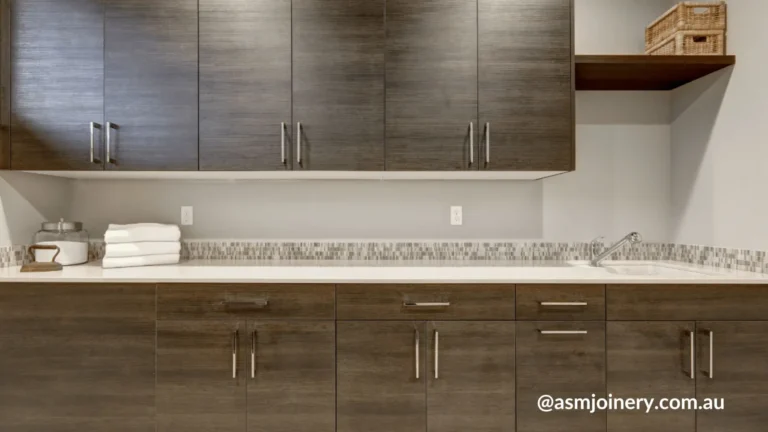
When it comes to timber veneers used in kitchens, there are several types to choose from:
- Raw Wood: This option gives you an authentic look and feel of real timber. You just need to decide what type of timber you want to use.
- Multilaminar: Made by recycling old veneers, this type is still real timber and is often used due to its sustainability.
- Rotary Cut: Cut directly from a log, this type can be rougher but is still preferred by many for its unique aesthetic.
- Shop Sawn: Handmade and considered the most expensive, this type is incredibly aesthetically pleasing and perfect for delicate work.
Wood Veneer Uses in Home Build
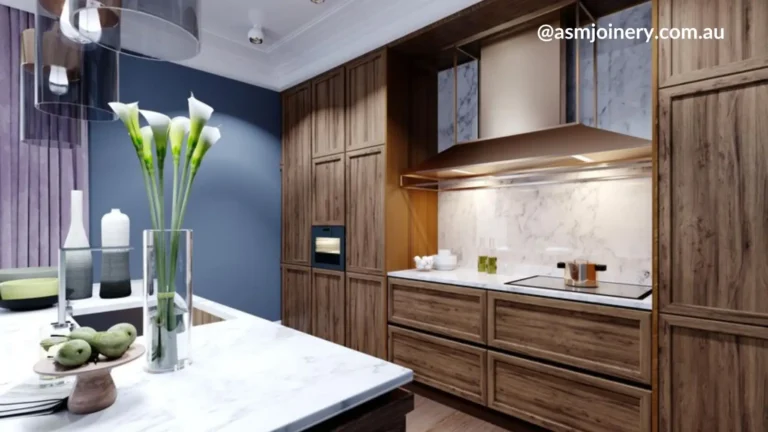
Timber veneers are used in various parts of the house, including doors, counters, and kitchen benchtops.
- Cabinetry: Veneers can be applied to cabinet doors, drawer fronts, and end panels, adding warmth and character to the kitchen.
- Island cladding: Using veneers to clad kitchen islands can create a focal point and tie together the design elements of the space.
- Backsplashes: Veneers offer a cost-effective alternative to natural stone or tile backsplashes, providing a seamless and easy-to-clean surface.
- Pantry doors and shelving: Adding veneers to pantry doors and shelving can elevate the look of the kitchen while maximizing storage space.
Advantages of using Timber Veneers
There are numerous advantages to using timber veneers over solid hardwood:
- Cost-Effectiveness: Veneers are more affordable than solid hardwood, making them a budget-friendly option.
- Customization: They come in vibrant colors and can be easily stained or painted to match your decor.
- Flexibility: Timber veneers are flexible and easy to mold into different shapes and thicknesses, making them perfect for custom cabinetry.
- Luxurious Look: Whether you prefer a smooth or textured finish, timber veneers provide a luxurious look and feel to any space.
- Durability: They are durable and long-lasting, resistant to dents and scratches if properly maintained.
- Low Maintenance: Timber veneers are easy to clean and maintain, requiring only regular cleaning to keep them looking their best.
- Stability: Unlike solid hardwood, timber veneers are less likely to warp or split, ensuring they stay looking great for years to come.
- Similarily to hardwood in this case, timber veneers are environmentally friendly, as they are recyclable and non-toxic, making them a sustainable choice for your home.
Maintenance Tips for Timber Veneers:

- Regular cleaning: Wipe down veneered surfaces with a soft cloth dampened with water or a mild detergent solution.
- Avoid harsh chemicals: Abrasive cleaners can damage the veneer finish, so it’s best to stick to gentle cleaning products.
- Protect from heat and moisture: Use trivets and coasters to prevent damage from hot pots and condensation, and promptly clean up spills to avoid water damage.
- Prevent scratches: Place felt pads on the bottom of objects to protect veneered surfaces from scratches and dents.
Timber Veneers from Canberra Experts
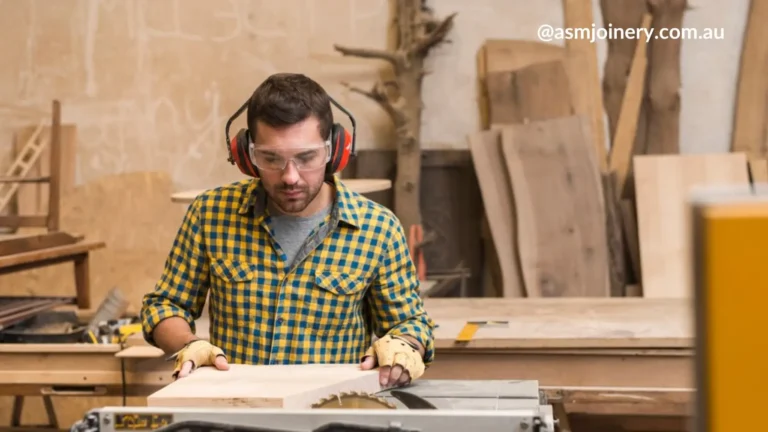
Considering all the benefits of timber veneers, it’s no wonder they’re a popular choice for kitchen cabinets and vanities. However, with so many options available, choosing the right one for your family can be confusing. That’s where an experienced cabinetry expert can help.
ASM Joinery has a reputation for excellence in Canberra, having completed numerous projects for families all over the ACT. Our experts can help you navigate the world of timber veneers and find the perfect option for your home. Get in touch with us today to take your home’s cabinetry to the next level.

